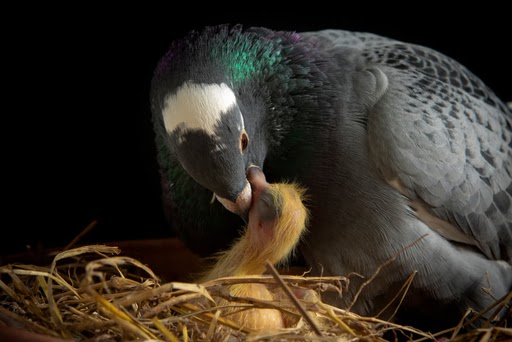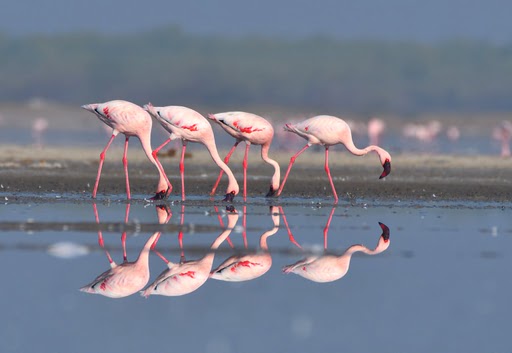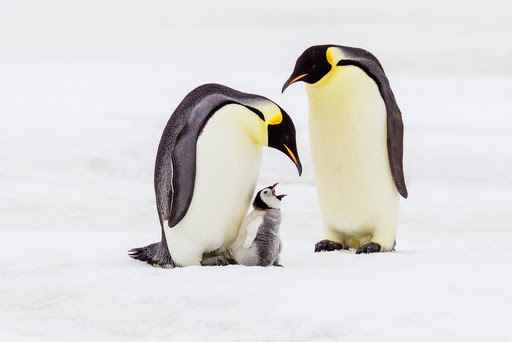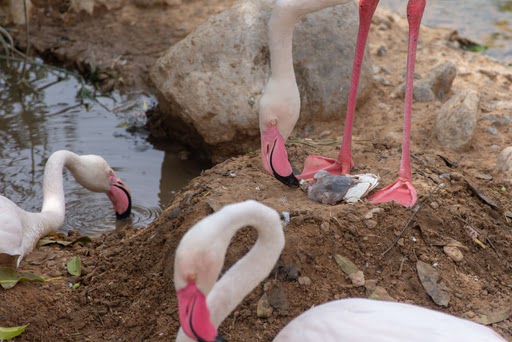Every living organism uses different strategies to survive in changing environments. One of these strategies is the ability of certain birds to produce milk. Doves and pigeons produce milk in their crops. Flamingos have modified upper gastric activity, and male emperor penguins have evolved an esophagus that secretes milk to nourish their offspring.
The animal kingdom is diverse, and we use specific characteristics to identify its members. If I were to ask you to think of an animal that feeds its young with milk, you would probably think of a cow, as we know that milk production is a defining characteristic of mammals. Even the word “mammal” itself indicates this, as it comes from the Latin word meaning “of the breast”.
However, here’s an interesting fact about birds. Like mammals, some bird species produce milk to feed their young! However, unlike mammary glands found in breasts, they produce milk in their stomachs, more specifically in their crop or esophagus.
 Male and female pigeons begin producing crop milk at least two days before their babies hatch. They feed it to the squabs for approximately two weeks. (Photo Credit: -stockphoto mania/Shutterstock)
Male and female pigeons begin producing crop milk at least two days before their babies hatch. They feed it to the squabs for approximately two weeks. (Photo Credit: -stockphoto mania/Shutterstock)
The crop is a modified part of the digestive tract and serves as a temporary food storage organ in many birds. It reduces the risk of predation by minimizing the time spent searching for food before flying away. However, some birds also use their crops and similar organs to produce milk!
What is Bird Milk?
Young mammals rely on milk for a short period of time, while bird hatchlings rely on worms and seeds that their parents have found. However, certain birds face challenges such as underdeveloped mouthparts or food scarcity. In these cases, a milk-feeding stage similar to mammals occurs to ensure that the young birds receive sufficient nutrition.
 Flamingos have a filter-like lining in their mouths that allows them to hold food and remove water. Their upper beak is stronger, which enables them to bend their heads and use the filter to ingest food. However, these filters are not well-developed in hatchlings. (Photo Credit: -Dchauy/Shutterstock)
Flamingos have a filter-like lining in their mouths that allows them to hold food and remove water. Their upper beak is stronger, which enables them to bend their heads and use the filter to ingest food. However, these filters are not well-developed in hatchlings. (Photo Credit: -Dchauy/Shutterstock)
When the eggs begin to hatch, the crop (in pigeons and doves) or esophagus (in emperor penguins) of certain birds undergo changes. Specialized cells in these organs collect fats, proteins, and other nutrients. Once enough nutrients have accumulated, the cell layer separates and can be fed to the babies as milk. Bird milk serves a similar function to mammalian milk, providing immunization and promoting growth.
Which Birds Produce Milk and Why?
Milk production is observed in three bird families.
- Flamingos (both male and female)
- Emperor penguins (only males) of the Penguin family
- Pigeons and Doves (both male and female)
Flamingos
Flamingos obtain a significant portion of their food from water, which they filter for nutrients, similar to the filters and sieves in your kitchen. However, these filters are not well-developed in hatchlings, so a liquid diet of bird milk becomes necessary. The parent flamingos produce milk in their digestive tract and feed their babies for approximately two months.
One fascinating aspect of this milk is its red color. The bird milk contains erythrocytes, which give it its unique hue.
Emperor Penguins
Emperor penguins breed in extremely cold temperatures on sea ice. The distance to the hunting sea is far, which can lead to starvation and death for the young penguins. Male penguins, who are the initial caretakers, produce bird milk to nourish their offspring. After laying an egg, the female emperor penguins go to the sea to hunt, while the male emperor penguin incubates the egg for several months. Once the egg hatches, the male feeds the young ones with milk from its esophagus.
 In the beginning, if the female does not return from the sea, the male emperor penguins feed the baby with milk. When the female returns, they switch to feeding by regurgitation. (Photo Credit: -Danita Delimont/Shutterstock)
In the beginning, if the female does not return from the sea, the male emperor penguins feed the baby with milk. When the female returns, they switch to feeding by regurgitation. (Photo Credit: -Danita Delimont/Shutterstock)
Upon the female emperor penguin’s return, they utilize other methods, such as regurgitation, to feed. This involves swallowing and partially digesting food, which is then given to the young penguin.
Pigeons And Doves
Pigeons and doves have specific requirements for crop milk. Without lactation, squabs (baby pigeons) fail to develop properly and may die.
The crop of male and female pigeons undergoes changes to produce this nutritious feed. Pigeons feed their hatchlings with crop milk for two weeks and then transition to other foods.
How Do Birds Produce Milk?
During the hatching phase, the digestive tract of birds undergoes changes (except for female emperor penguins). The process begins with the production and release of the hormone prolactin. Prolactin promotes parental behaviors in birds, such as brooding and feeding.
 Flamingos build mud-nests for their eggs. After hatching, they provide red milk containing erythrocytes for a few months. (Photo Credit: -kingma photos/Shutterstock)
Flamingos build mud-nests for their eggs. After hatching, they provide red milk containing erythrocytes for a few months. (Photo Credit: -kingma photos/Shutterstock)
Prolactin stimulates the increase of germinal cells in the crop and enhances the synthesis of molecules like triglyceride and antimicrobial proteins.
With the production of prolactin and the activation of genes responsible for synthesizing important nutrients, the cells in the crop or esophagus multiply and store these nutrients. Once enough nutrients accumulate, the cell layer separates as a fluid mass.
The bird then regurgitates this digestive tract derivative to feed the hatchlings.
Conclusion
Milk, a nutritious feed, is typically secreted by mammals, but there are exceptions in other classes, including birds like doves, emperor penguins, pigeons, and flamingos.
Although bird milk differs in synthesis from mammalian milk, it still provides similar health benefits to their young. The crop (in pigeons and doves), esophagus (in male emperor penguins), and entire upper gastric path (in flamingos) undergo functional changes, transforming into milk-producing organs. These modified functions help overcome environmental constraints and increase the chances of survival for their offspring.
Various hormonal and genetic regulations initiate the lactating phase, which lasts for 2-3 weeks depending on the bird species and family. Once the birds reach a certain stage, their digestive tract returns to its normal function of food storage, and the parent bird stops lactating.
